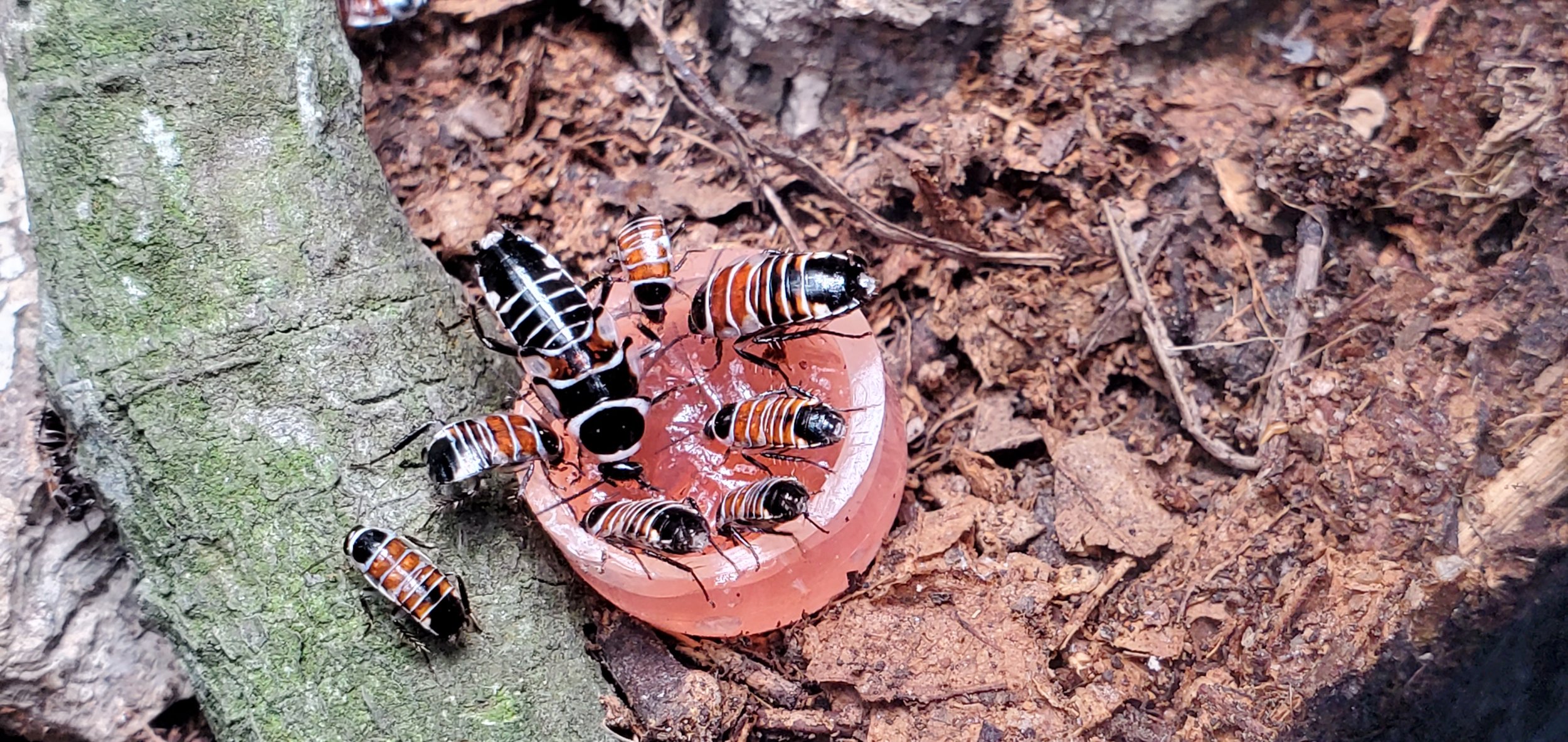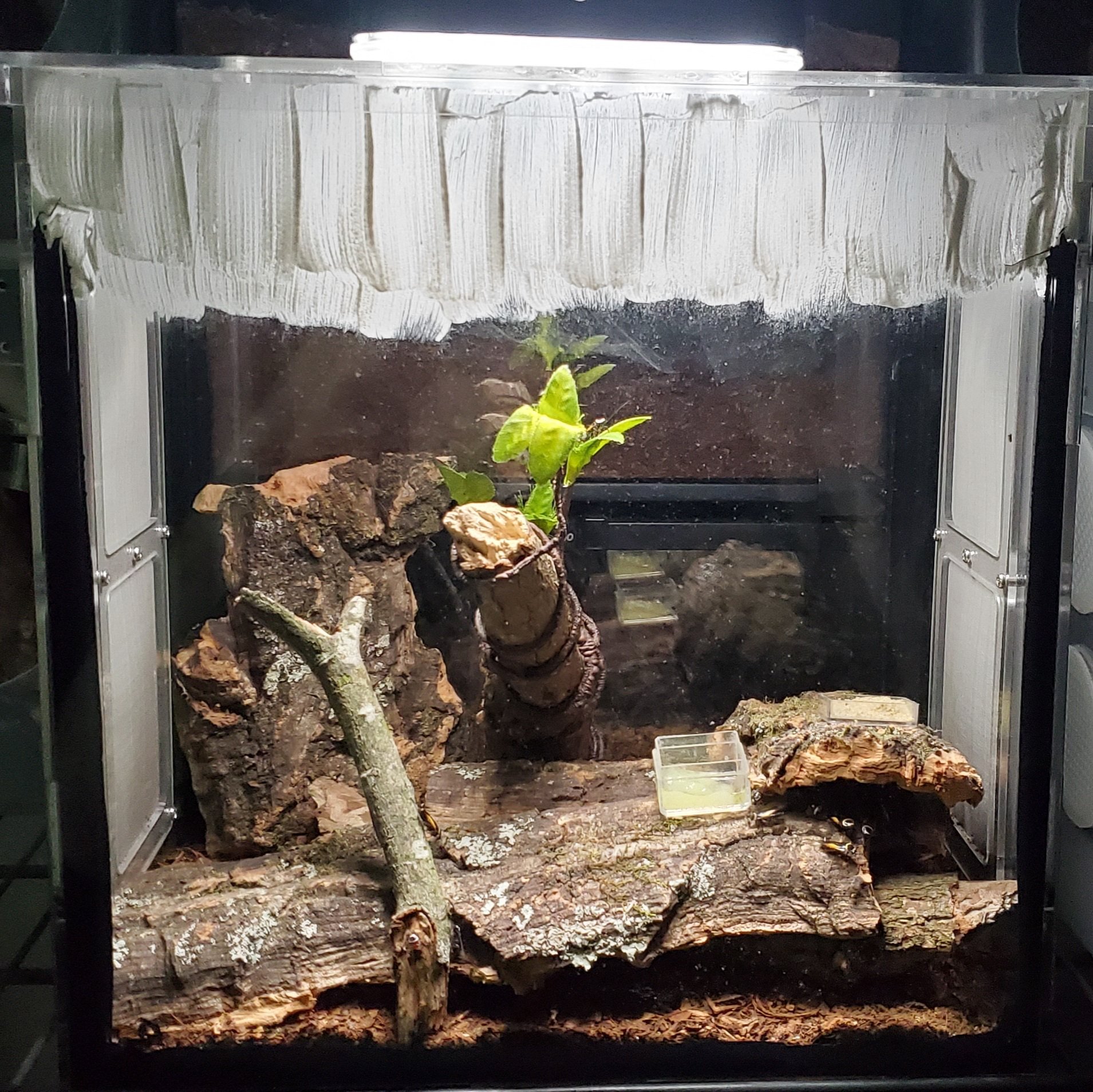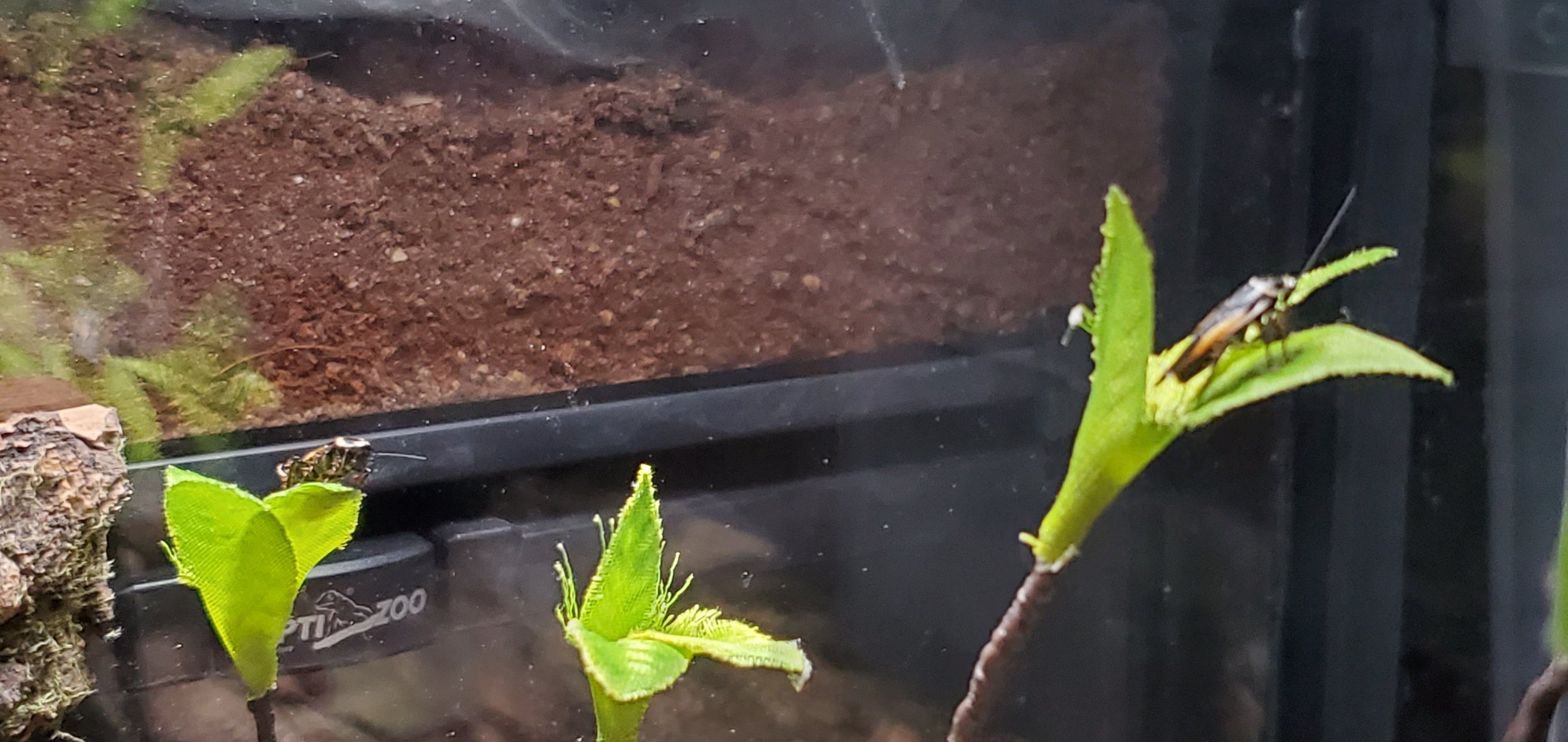Hemithyrsocera vittata, The Gold Banded Clown Roach
Hemithyrsocera vittata adult female
Welcome to the entry log of th Gold Banded Clown Roach, a spectacular looking roach. Bright yellow side bands on jet shiny black body for the adults and red on black, alternated with white bands, these couldn’t be any more vibrant!
The meaning of their name refers to “hemi” -half ; “thyre” - shield ; “socera” - possibly related to sorcery or sorcerer(?).
The known worldwide distribution of these roaches is as follows: India; Burma; Thailand; Cambodia and China.
Hemithyrsocera vittata photo composition
I received my colony from China on the 29th October 2021, I think around 30 nymphs.
Hemithyrsocera vittata nymphs feeding on jelly immediately after arrival
Besides being completely in awe by their amazing looks, I was stunned by their speed. To be honest, I was totally unprepared to keep these. Especially regarding to the enclosure requirements.
At first I was housing them on a small vertical enclosure, with a top and front magnetic lid.
I can tell you, this was hell! Every time I had to feed them, it was a nightmare, as they would immediately sense the airflow and start to go berserk!
Hemithyrsocera vittata feeding
But as everything in life, all living creatures have a set pattern of behaviors and rhythms, and these were no different.
After few days, I understood that they would completely calm down at night after the lights were out. Also confirming that they are clearly, diurnal active roaches. Another fascinating reason to keep these, as most of the roaches are nocturnal.
First Hemithyrsocera vittata adult
Even with the difficulties of the feeding and maintenance, it didn’t take long for the nymphs to mature, and soon after they were already mating and producing oothecas.
First Hemithyrsocera vittata mating
Hemithyrsocera vittata female with ootheca
The photos above were taken early December 2021. Around 40 days after receiving the colony :D
A couple weeks later, I finally received their enclosure upgrade.
A 30x20x30 cm acyrlic enclosure, with side meshes and two lids. One larger (maintenance) and one smaller (feeding).
I applied the necessary baby powder barriers, decorated it and here it was in all its glory!
Hemithyrsocera vittata enclosure
Hemithyrsocera vittata enclosure top view
These were all the oothecas I managed to find from the older enclosure.
Hemithyrsocera vittata oothecas
Some of them don’t look that promising at all, maybe it was because I was keeping the enclosure too dry.
Since then, I have increased the humidity on the soil, and the other oothecas which have been lay are looking much better, but still no births so far as I could see :(
I am a little bit concerned about it actually, but let’s see. The species is not difficult to obtain locally, in case I fail, I should be able to get more and try again, even if that no part of my plan :D
A very curious thing I noticed was that the males took over some sort of territory, particularly noticeable on these fakes leaf pockets. It would be interesting to experiment with real flowers, I am imagining that the males in nature may guard some particular flowers or floral nectaries as surely it would attract females.
Well this is it for this entry log. Thank you for taking the time to read, let me know if you have any comments.
I will keep you posted on the developments, especially if I see new baby nymphs!
Cheers!
Hemithyrsocera vittata nymph












